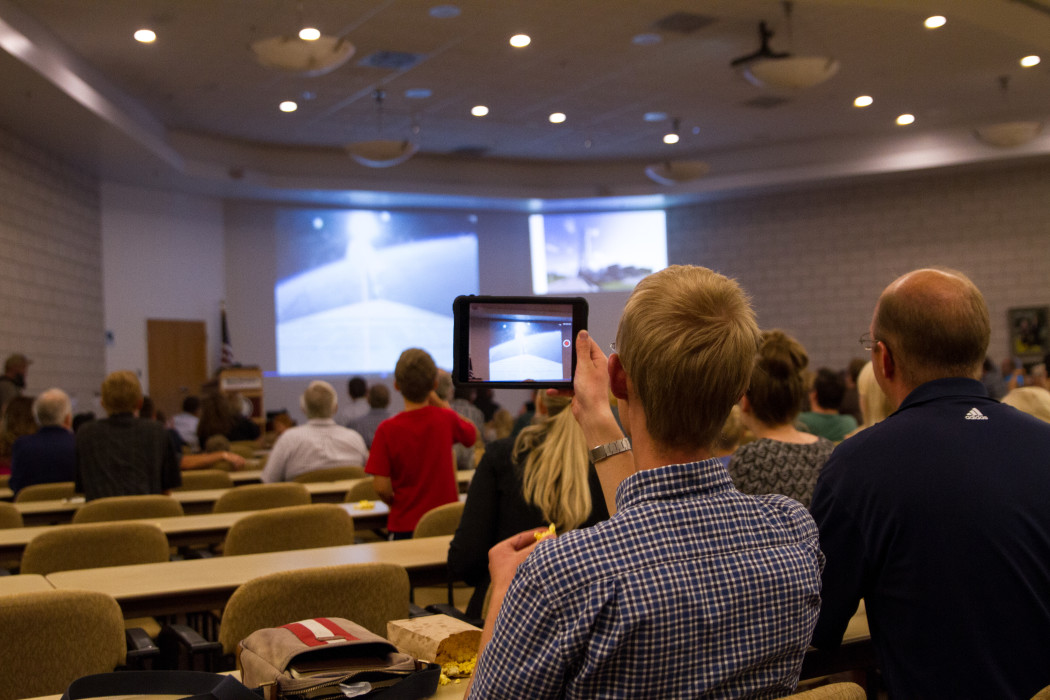USU’s Space Dynamics Lab built cameras for NASA’s OSIRIS-REx mission
For the past four years, scientists at Utah State University’s Space Dynamics Lab have spent much of their time designing and constructing cameras for NASA’s OSIRIS-REx mission.
On Thursday night, the rocket finally lifted off from Florida’s Cape Canaveral Air Force Station, and scientists gathered with their families to celebrate years of hard work.
“It was pretty surreal,” said Matt Sorensen, who worked on wiring for the cameras. “I’ve seen other rocket launches, but I think it meant a lot more because I had so much time invested in this particular launch. So to see it take off, it was pretty exciting.”
The OSIRIS-REx mission was designed to rendezvous alongside Bennu, an asteroid near Earth, and take pictures of the surface.
Jessica Jensen, who was in charge of finances for SDL’s camera project, said nearly 60 people helped create the cameras that will provide imaging of the asteroid’s surface.
The mission will also pick up a small sample of the asteroid and bring it back to Earth to analyze. Jensen says this piece of the asteroid will be no larger than 60 grams, or the size of a Snicker’s bar.
According to a university press release, that Snicker’s-bar-sized piece of rock could reveal a great deal about the solar system.
The press release says scientists believe Bennu has a good chance of crashing into Earth in the late 22nd century, so studying the asteroid’s chemical and physical characteristics could help future scientists know what kind of impact Bennu would make on the planet.
Bennu may also contain natural materials — such as water, precious metals and organics — that could one day fuel space missions, the release says.
Last, it says the asteroid may contain the “molecular precursors to the origin of life and the Earth’s oceans.”
OSIRIS-REx will be in space for about seven years. It’s expected to meet up with Bennu in 2018, start to make its way back to Earth in 2021 and land in Utah in 2023.
Darin Partridge, director of the C4ISR sector of SDL, asked all the eight-year-old children to raise their hands before the rocket launched.
“I want you guys to remember this day, OK?” he said. “Because when we get this back, you’re going to be about 15 years old. And when you look at the newspaper that day, this is going to be in it, and you’re going to say, ‘I remember being eight years old, watching this thing launch.’”
Until then, scientists from the lab and their families will no doubt keep a close watch on OSIRIS-REx as it travels through space to meet Bennu.

